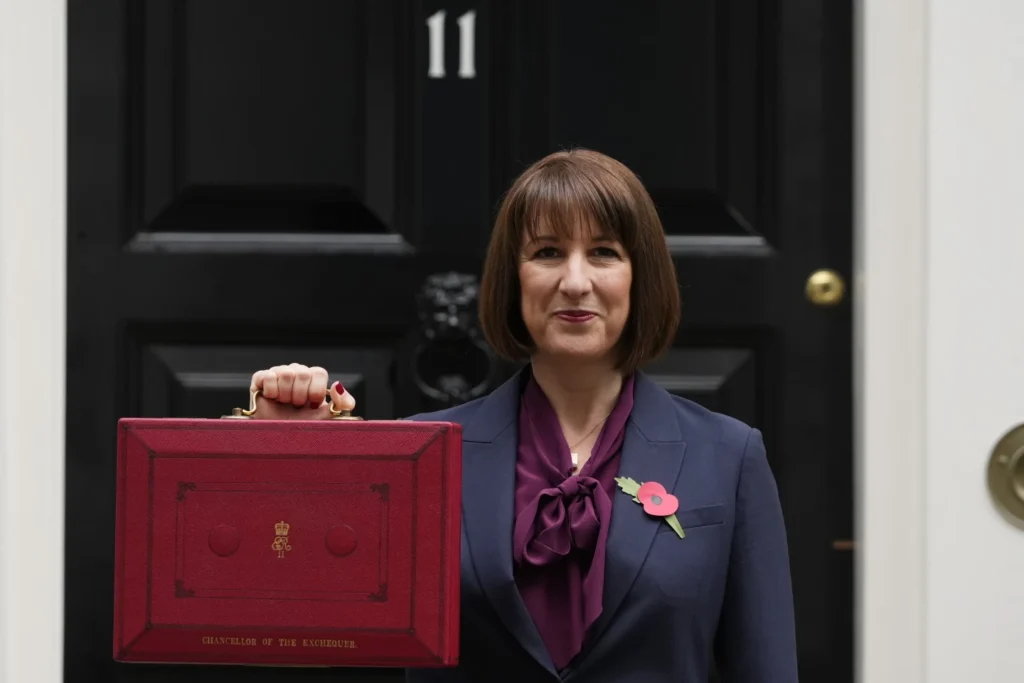Labour has just delivered its first budget in 15 years, a totemic moment for the new government that will define their whole parliamentary term. Having warned of a very challenging backdrop, the Labour Chancellor Rachel Reeves went for a bold, some might say, too bold approach, including announcing a £40 billion tax rise, which is nearly the same as former left wing Labour Leader Jeremy Corbyn’s 2017 manifesto of £43 billion tax rises, prompting raised eyebrows. The tax rises are mainly carried by businesses, including via the employers national insurance as well as adjusting the fiscal rules to enable a huge increase in borrowing for capital investment, up to £100 billion in the next five years.
Governing is about choices and Reeves has prioritised a bigger government – with key areas of focus, including in schools, in clean energy and defence spending. However, the centre piece is on the NHS, with a spending boost of £22.6 billion in the next two years.
For government departments, significant pressures remain, with the Chancellor demanding a 2% efficiency saving, which will likely give cabinet ministers headaches. Departmental spending increases will be capped at 1.5%, lower than the 2% expected, meaning while departments like the health and education service may fare better, departments such as the Home Office and Transport Department could face further pressure.
Below are what some highlighted areas include:
Food Policy
- Labour’s interest in public health shines here, with the government planning to increase the Soft Drinks Industry Levy (a sugar tax for drinks) to take into account inflation. They are also looking to expand the tax to include milk products and at lowering the sugar thresholds.
- There was also a notable boost for school breakfast clubs, tripling the previously announced investment to £30 million for primary schools. More widely, schools are getting a significant funding boost for both capital and core school budgets, with these increases partly funded by the imposition of VAT and business rates on private schools.
International Development
- The government seems to be trying to hold the line on overseas spending – although it looks like there might be a stealth cut due to not renewing a £2.5 bn top up funding under the last government. For overseas development spending (ODA), the government confirms it will stick to a 0.5% level of spending of gross national income for the next two years (it was in practice about 0.58% in the past two years), prompting concerns from international aid charities. While the government made noises on returning to the David Cameron era figure of 0.7% when fiscal pressures allow, they also say current projections mean this is unlikely to happen at all in this parliament. The ODA also includes domestic spending on areas such as housing refugees, with the aspiration to reduce this but this will in practice also be challenging.
Energy
- Confirming that energy policy remains a high priority for this government, a considerable amount of funding has been allocated on a range of different energy projects, including setting up GB Energy, billions more for new nuclear and carbon capture technologies, a £3.4 billion boost for the Warm Homes Plan to improve energy efficiency, alongside a £2 billion investment to support Electric Vehicle manufacturing within the automotive sector. The Chancellor also confirmed the increased windfall tax, or Energy Profits Levy, taking into effect on November 1st. This raises the tax rate on oil and gas activities to a striking 78%—one of the highest globally—and extends its duration by a year to March 2030.
Conclusion
This is a notable budget and the largest tax raiser since 1993. There is a clear focus on big infrastructure spending, paired with planning reform and key public services – namely on the NHS and schools.
However, this is a major gamble for Labour. The government has thrown a lot of money at seeds which may not sprout for many years – perhaps even decades later, and if the global economic outlook worsens, they will feel exposed. Tax rises also risk being unpopular and if it slows economic growth, it would be fiscally and politically disastrous. The large increase in borrowing will also mean higher debt interest and it will take some time to see how the market reacts. In the meantime, Labour will continue to face hostile accusations from the media and from the Conservatives that they did not reveal these harder choices in the general election. Looking ahead, the Treasury will have to face a multi-year spending review in Spring, which sets the budgets for Departments for 2026–27 onwards.
With Labour frontloading many of their tax and spend policies in the first half of this parliament, growth needs to be seen quickly and beyond the downbeat forecasts from the Office for Budget Responsibility, which are well below Prime Minister Keir Starmer’s ambitions for 2.5% annual GDP growth and actually projected lower than the Conservative’s last budget earlier this year. Without achieving higher growth, it is hard to see how this budget will be seen as a success in hindsight. In the meantime, ministers will remain very cautious in committing to any expensive policies that do not have a direct line of sight to boosting the economy.
Image credit: Kristy Wigglesworth, CC BY 4.0, via apnews.com



